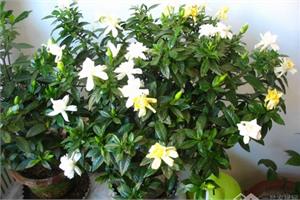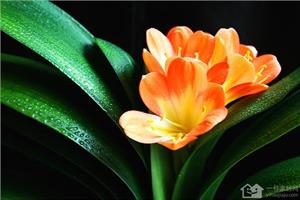Related techniques for transplanting Osmanthus fragrans matters needing attention in transplanting Osmanthus fragrans
Sweet-scented osmanthus is a highly ornamental flower variety, which has been widely concerned by people, so what are the matters needing attention for sweet-scented osmanthus transplanting? I believe everyone would like to know the answer to this question, so let's take a look at the matters needing attention in the transplanting of sweet-scented osmanthus. Through the study of the knowledge of sweet-scented osmanthus, we can better apply it to our daily life. then let's take a look at the related techniques and matters needing attention of sweet-scented osmanthus transplanting.

Planting and later management
Before planting, the original soil brought back by transport sweet-scented osmanthus trees should be backfilled with 10 to 15 meters of soil for the pre-dug tree holes. Because the sweet-scented osmanthus tree is not resistant to flooding, the depth of the planted sweet-scented osmanthus is 10 to 15 meters higher than the original ground. First of all, put the sweet-scented osmanthus tree in the direction of its original growth, and then put a plastic tube in each of the four corners of the tree pit to increase the air permeability of the root after filling the soil. Then remove the sample in sequence and backfill to 1 / 3 of the height of the earth ball, fill the original soil close to the surroundings of the soil ball, and fill a solid layer to prevent the soil ball from breaking. All the tree pits are filled firmly, cofferdam, braced and watered for the first time.
Transplanting time of Osmanthus fragrans
The transplanting time of sweet-scented osmanthus is critical. According to the growth habits of sweet-scented osmanthus trees, the best season for transplanting sweet-scented osmanthus seedlings (trees) is generally spring and autumn. From an economic point of view, the best time to transplant sweet-scented osmanthus seedlings (trees) is after mid-September in autumn, because autumn and winter is not the traditional season for cultivating trees, the sweet-scented osmanthus seedling market is not prosperous in spring, and the growth of sweet-scented osmanthus seedlings in many seedling merchants is not as prosperous as in spring, so the price will come down. At this time to buy sweet-scented osmanthus seedlings to plant can enjoy a lot of price concessions.
Therefore, the transplanting time of sweet-scented osmanthus can be arranged according to the owner's own ideas and needs. Generally speaking, it is best to choose spring and autumn season to transplant sweet-scented osmanthus trees. If you want to reduce costs and grasp spring shoots, you can choose to plant in autumn and winter.
Shaping and pruning
1. Shaping and pruning sweet-scented osmanthus is an important measure to cultivate single-stem sweet-scented osmanthus. Timely and reasonable pruning can make it ventilated and transparent, strengthen photosynthesis, and reduce diseases and insect pests, so as to make sweet-scented osmanthus grow fast, straight trunk and beautiful tree shape.
two。 When sprouting sweet-scented osmanthus, the buds of the trunk and base can also germinate, so the useless buds in the lower part of the trunk should be peeled off in time to concentrate water and nutrients, promote the development of upper branches and form an ideal tree shape.
3. Thinning cultivation of single stem sweet-scented osmanthus, from the beginning of the seedlings should consciously cultivate the trunk straight, maintain a certain height under the branches, cut off useless branches, the general height of sweet-scented osmanthus branches after growing up is about 1.5 meters.
4. Cut short the long top branches to keep the sweet-scented osmanthus at a height of about 3.5 meters and a crown width of 2.5 to 3 meters.
5. Before transplanting seedlings, the transplanted land must be deeply ploughed with fine rakes and "three ploughs and three harrows". Increasing the air permeability and water retention capacity of soil is beneficial to the activity of aerobic bacteria, promote the decomposition of organic fertilizer, and create a good growth environment for root system.
If you want to know more related information, you can continue to follow the No. 1 home network.
Related
- Wuhan Hospital Iron Tree Blooming Result Was Instantly Frightened by the Gardener Master
- Which variety of camellia is the most fragrant and best? Which one do you like best?
- What is the small blue coat, the breeding methods and matters needing attention of the succulent plant
- Dormancy time and maintenance management of succulent plants during dormancy
- Minas succulent how to raise, Minas succulent plant pictures
- What are the varieties of winter succulent plants
- How to raise succulent plants in twelve rolls? let's take a look at some experience of breeding twelve rolls.
- Attention should be paid to water control for succulent plants during dormant period (winter and summer)
- Watering experience of twelve rolls of succulent plants
- Techniques for fertilizing succulent plants. An article will let you know how to fertilize succulent plants.



